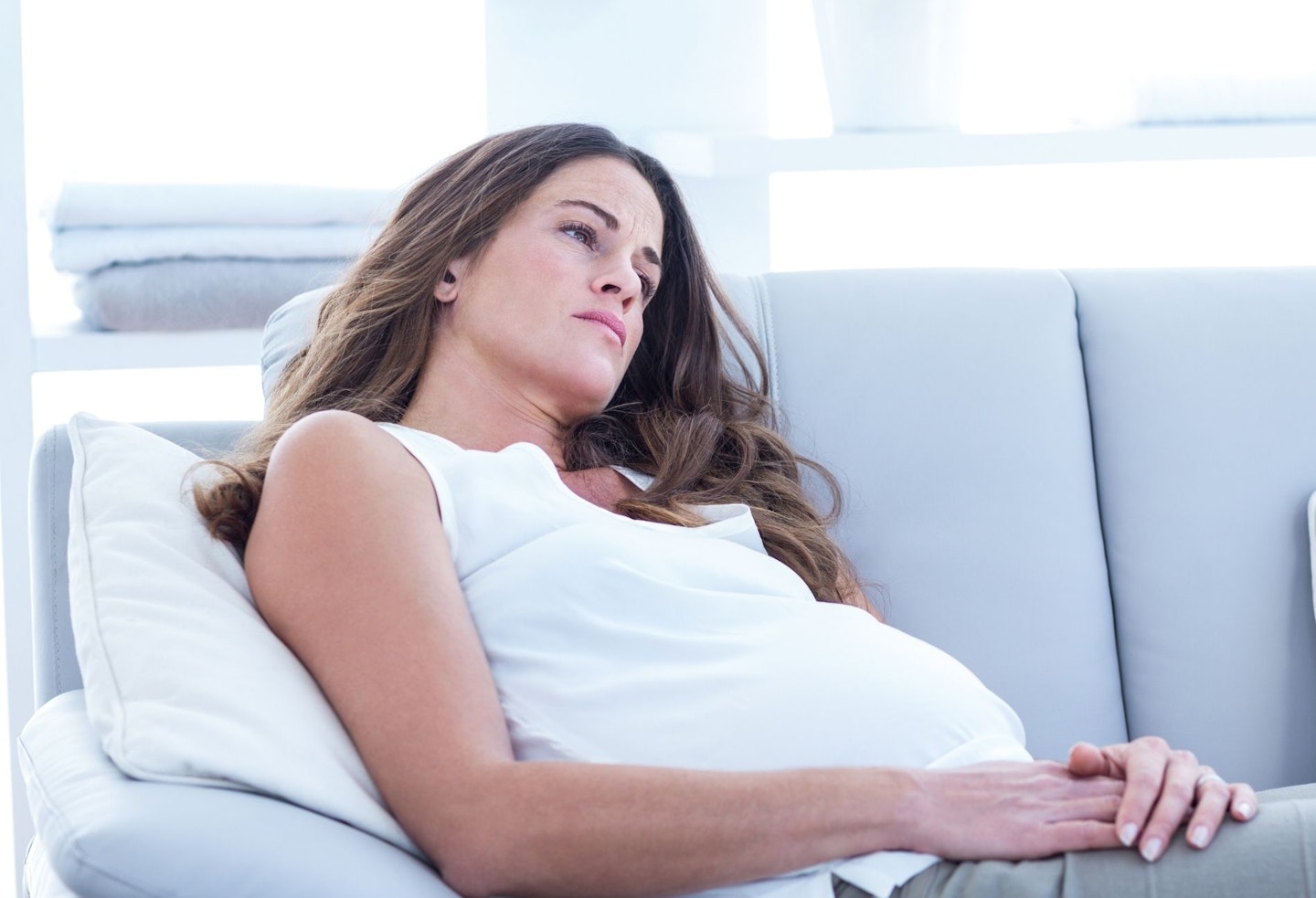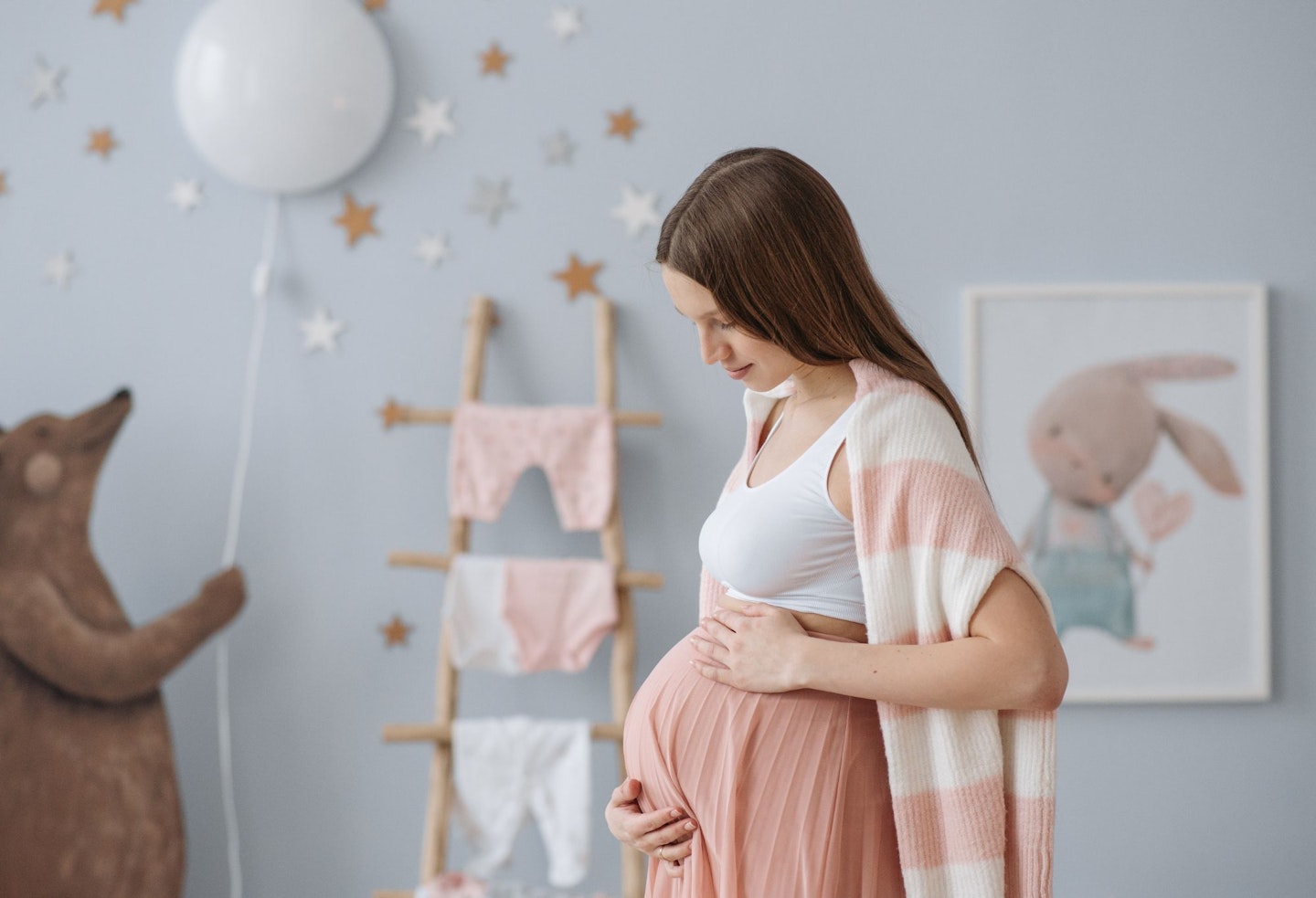
Medically Reviewed by: Lesley Bland BA (Hons), BSc (Hons) Midwifery Studies
Ah, the gender reveal — one of the most exciting parts of pregnancy! I mean, who doesn’t love finally putting an end to the guessing game? Once you know, you can start decorating the nursery, picking out baby names, and, of course, stocking up on adorable baby outfits. Unless you are opting for a gender-neutral theme, then I understand the anticipation. And if I’m being honest, baby girls have some seriously adorable clothing options (why don’t they make those in adult sizes too?)
If you’re hoping to crack the code early, you’ve probably come across countless "signs" that supposedly hint at having a boy or a girl. Are these really signs you're having a girl, or just hormones? Do any of these tales hold water? To separate fact from fiction, we spoke to Lesley Bland, a registered midwife and consultant midwife for My Expert Midwife. Here's what she had to say.

Can pregnancy symptoms predict gender?
"The truth is that every natural pregnancy has the same odds — a 50/50 chance of being a boy or a girl," Lesley explains. "There’s absolutely no evidence to support old wives’ tales as accurate indicators of gender. They’re just for fun!"
That being said, many mums-to-be can’t help but speculate based on things like morning sickness or cravings. Here’s a look at some of the most common myths and what our expert Lesley has to say about them.
The myths about signs you’re having a girl
Myth 1: Carrying high means you’re having a girl
Myth: If your bump is sitting high near your rib cage, it supposedly means you’re having a girl.
Truth: Nope! How you carry your baby depends on factors like your body shape, muscle tone, and the baby’s position — not gender.
Myth 2: Baby’s heartbeat faster than 140 beats per minute? It’s a girl!
Myth: The heartbeat of a girl is usually faster than a boy.
Truth: "This one has been around forever," Lesley says, "but studies show no consistent difference between boys’ and girls’ heart rates." So don’t read too much into those scan numbers.
Across the first trimester, evidence from Fetal Diagnosis and Therapy explains that the average heart rate for baby boys was 154.9 beats per minute, while baby girls averaged 151.7 beats per minute.
Lesley adds, "Early in pregnancy, a baby’s heart rate (male or female) will naturally be higher than it would be at full term — around 170 bpm at 10 weeks, decreasing to about 130 bpm at full term. However, heart rate can also be influenced by maternal wellbeing and the baby’s movements. For instance, if mum has a fever and a faster heart rate, this can directly increase the baby’s heart rate. Similarly, if the baby has just been active or had lots of movement, their heart rate will be higher than during quieter periods of rest or sleep."
Myth 3: You’re having more morning sickness? It’s a girl!
Myth: The worse your morning sickness, the more likely you’re having a girl.
Truth: "Hormones can play a role in nausea," Lesley acknowledges. "But every woman and pregnancy is different. Some women feel terrible with boys too!"

Myth 4: Craving sweet foods means a girl
Myth: Sweet cravings indicate a girl, while savoury cravings mean a boy.
Truth: Your cravings are more likely due to nutritional needs or hormonal changes than your baby’s gender.
Myth 5: Your skin is breaking out? It’s a girl "Stealing your beauty"
Myth: Girls supposedly "steal your beauty," leading to breakouts and tired-looking skin.
Truth: "Hormonal changes affect the skin during pregnancy regardless of gender," Lesley says. "There’s no evidence that girls ‘steal your beauty.’" Thank goodness!
Myth 6: Dull-coloured urine means a girl
Myth: If your urine is a dull yellow, it could be a sign of a baby girl.
Truth: Nope! The colour of your urine is usually influenced by hydration levels, not your baby’s gender.
Myth 7: The ring test (Swing side to side = girl)
Myth: Tie a ring to a string and hold it over your bump. If it swings side to side, it’s a girl.
Truth: "This is just a fun one," Lesley laughs. "It’s harmless entertainment, but don’t go buying pink onesies based on it!"
Myth 8: You lie on your right side when sleeping
Myth: If you wake up on your right side, you’re having a girl.
Truth: "There’s no scientific connection between your sleeping position and the gender of your baby," says Lesley.
Myth 9: Increased breakouts and oily skin
Myth: Oily skin and breakouts indicate a girl.
Truth: Again, hormones are to blame here, not your baby’s gender.
Myth 10: Presenting hands palm up indicates a girl
Myth: If you naturally show your hands palm up when asked, it’s a sign of a baby girl. Hands down indicate a boy.
Truth: There’s absolutely no science behind this quirky tale.

Myth 11: You’re really moody
Myth: Extreme moodiness means a girl is on the way.
Truth: Pregnancy hormones can cause mood swings for anyone, regardless of whether it’s a boy or girl.
Myth 12: Carrying weight around the middle means a girl
Myth: If you gain weight around your middle, it’s a girl. But if you are gaining weight all in front of the body, it means you're having a boy.
Truth: How and where you gain weight is influenced by your body type and pregnancy factors, not the baby's gender.
Myth 13: An odd number from combining your age and conception month means a girl
Myth: Add your age at conception and the month number — if it’s odd, it’s a girl.
Truth: This is just a fun math game with no basis in biology.
Myth 14: Your feet haven't grown
Myth: If your feet don’t swell, it’s a girl.
Truth: Foot swelling varies from woman to woman and isn’t related to the baby’s gender.
Foot swelling, known as oedema, is a common symptom during pregnancy caused by the body retaining extra fluid. According to the NHS, the pressure from your growing womb can also impact blood flow in your legs, leading to fluid buildup in your legs, ankles, and feet.
Myth 15: Softer skin indicates a girl
Myth: Your skin may feel softer if you’re having a girl.
Truth: Skin texture changes are hormonal, not gender-related. The surge of estrogen during pregnancy can cause noticeable changes, with some women experiencing softer and smoother skin.
Myth 16: Your feet don’t get cold easily
Myth: If your feet stay warm during pregnancy, it’s a girl.
Truth: Temperature regulation during pregnancy isn’t linked to gender. According to the experts, temperature changes are most likely due to normal hormonal fluctuations.
Myth 17: You eat garlic but don’t smell of it after
Myth: If you eat garlic and don’t smell afterward, it’s a girl.
Truth: This has more to do with your body chemistry than your baby’s gender.
Myth 18: You felt stressed at conception
Myth: Feeling stressed at conception means a girl.
Truth: Stress levels don’t influence whether you conceive a boy or girl.
Myth 19: Your linea nigra stops at the belly button
Myth: If the line on your belly stops at the belly button, it’s a girl.
Truth: The length of the linea nigra has no correlation with gender. Linea nigra is a normal part of pregnancy and doesn't require any treatment. While you can't prevent it, protecting your skin from the sun can help make the line less noticeable. The line appears because pregnancy causes the placenta to produce more of a hormone that increases melanin, the pigment that gives your skin its colour.
Myth 20: You avoid eating bread crusts
Myth: Not eating the crusts on your sandwiches means you’re having a girl.
Truth: There's no evidence that skipping bread crusts indicates you're having a girl. It's simply a matter of personal taste and how you prefer to enjoy your bread.

How is gender actually determined?
Lesley explains, "The baby’s sex is determined at the moment of conception when one lucky sperm fertilises the egg. If it carries an X chromosome, it’s a girl; if it’s a Y chromosome, it’s a boy."
When can you find out the baby's gender?
According to an expert, then, these signs you're having a girl aren't based on anything scientific. While old wives' tales are fun, there are actual medical methods to determine your baby's gender:
Non-Invasive Prenatal Testing
This blood test can be done as early as 10 weeks and reveals the baby’s gender with over 99% accuracy.
Anomaly scan
Most parents find out during the 20-week scan. "But accuracy can depend on the baby’s position," Lesley says. So fingers crossed your little one cooperates!
Amniocentesis or Chorionic Villus Sampling (CVS)
These tests, typically done for genetic reasons, can also confirm the baby’s gender. However, they’re invasive and not usually performed just to find out if you’re having a boy or girl. It is a procedure done by the NHS to check if your baby has a genetic or chromosomal condition, such as Down's syndrome, Edwards' syndrome or Patau's syndrome.
About the expert
Lesley Bland has also provided her expert advice and medically reviewed this article. Lesley is a Registered Midwife and Consultant Midwife for My Expert Midwife. She began her Midwifery career working in large teaching hospitals rotating through all clinical areas with particular emphasis on antenatal and intrapartum care. Lesley qualified as a mentor of students and developed a passion for education specialising as a Clinical Educator teaching the maternity multidisciplinary team.
About the author
Anne Lora Scagliusi is a Senior Digital Writer at Mother & Baby. She is a Scotland-based journalist with over a decade of international writing experience, specialising in women’s health, maternal mental health, and wellness. Her work has been featured in Vanity Fair, Marie Claire, and Glamour and has appeared on several Vogue global editions. She is mum to a one-year-old bambino and lives between Italy and the UK.
